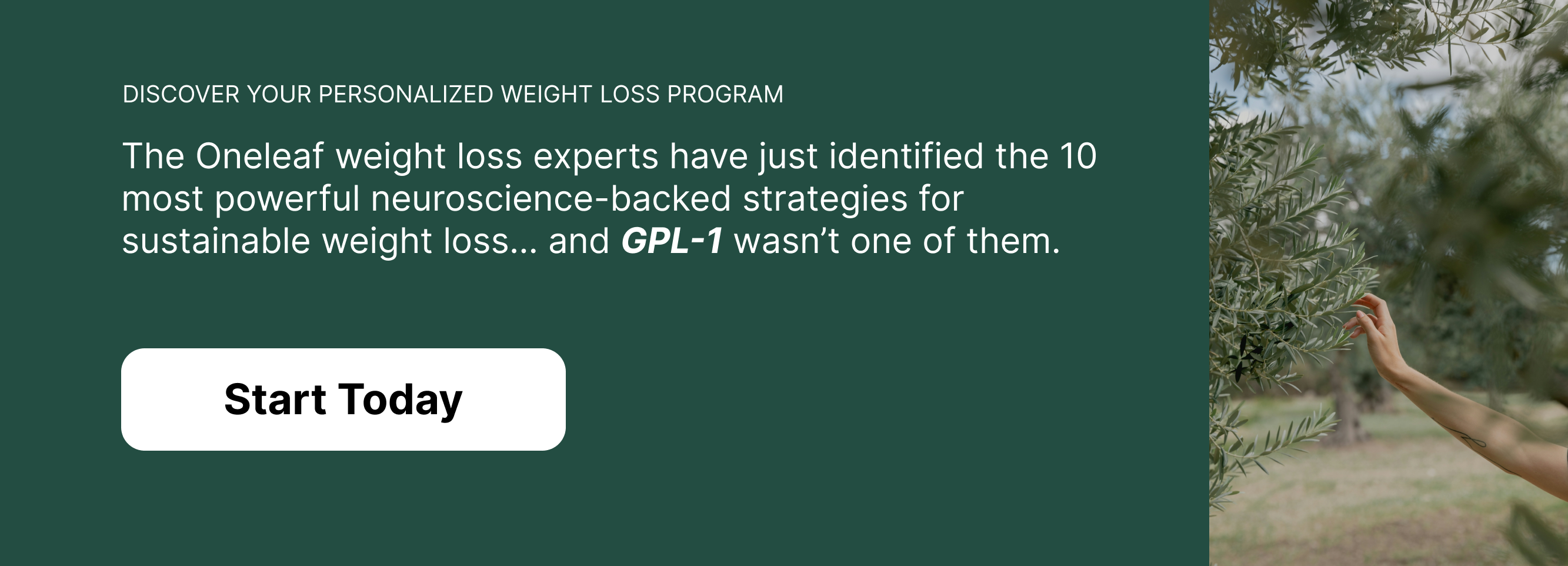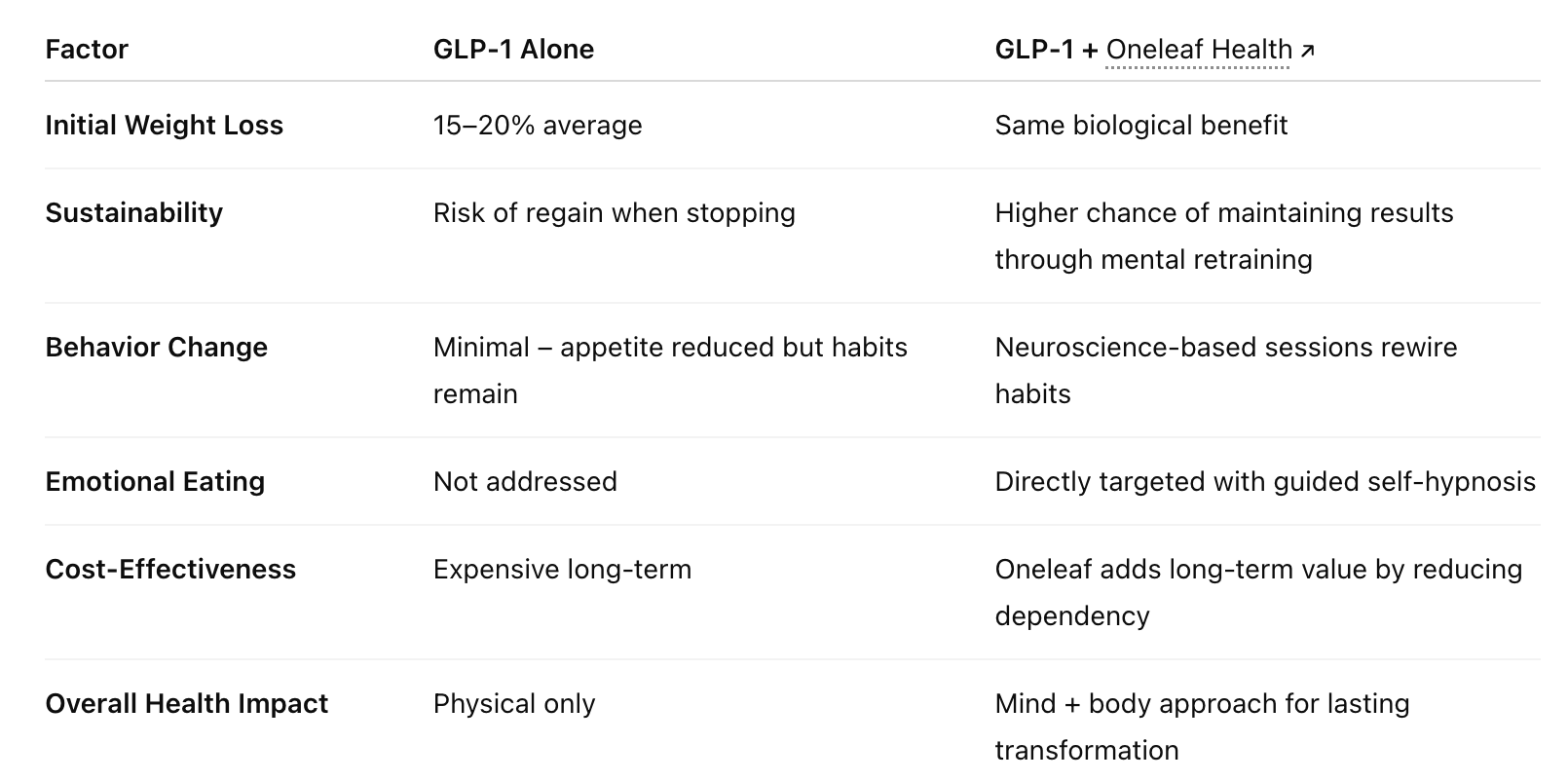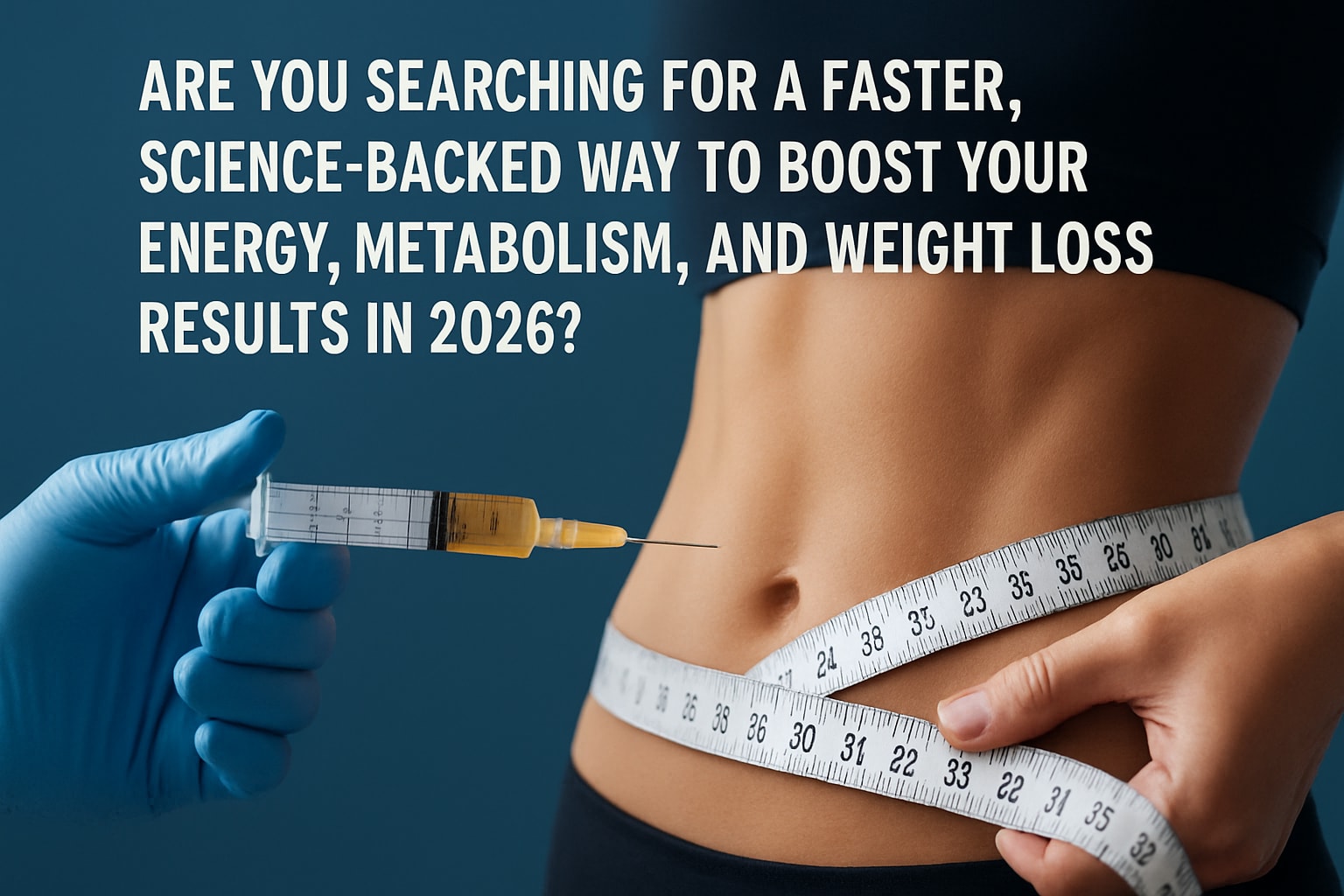By 2025, GLP-1 medications like Ozempic, Wegovy, and Mounjaro have become household names. Millions of people worldwide now use them for weight loss, making GLP-1 drugs one of the biggest health trends of the decade. But beyond the hype, what are the real results of GLP-1 in 2025? Are the outcomes as transformative as promised, and what are the challenges users still face?
More importantly, how can programs like Oneleaf Health play a crucial role in complementing GLP-1 treatment, ensuring long-term weight management and overall health? Let’s take a deep dive.
What Are GLP-1 Medications?
GLP-1 stands for glucagon-like peptide-1, a hormone that regulates blood sugar and appetite. Drugs like Ozempic (semaglutide), Wegovy (semaglutide at higher doses), and Mounjaro (tirzepatide) mimic this hormone to:
- Reduce appetite
- Slow digestion
- Improve insulin sensitivity
- Support weight loss and type 2 diabetes management
Initially designed for diabetes, GLP-1 drugs quickly became famous for their weight loss results, leading to widespread off-label use.
The Real Results of GLP-1 in 2025
Weight Loss Outcomes
By 2025, clinical data and real-world use paint a clear picture:
- Average weight loss: Most users lose 15–20% of body weight within 12–18 months.
- Rapid early results: The most significant losses occur in the first 3–6 months.
- Plateau effect: After 12 months, many experience weight stabilization, with further loss slowing down.
- Maintenance issues: Studies show that weight regain is common after discontinuing GLP-1 drugs.
Beyond the Scale
The benefits go further than pounds lost:
- Better blood sugar control
- Reduced risk of heart disease
- Decreased sleep apnea symptoms
- Improved mobility and quality of life
The Challenges
But the real results of GLP-1 in 2025 also include downsides:
- High cost (often $800–$1200/month without insurance)
- Side effects (nausea, diarrhea, constipation, fatigue)
- Long-term dependence (weight often returns when stopping medication)
- Psychological adaptation (some users struggle with identity changes and food relationship shifts)

GLP-1 Alone vs. GLP-1 with Oneleaf Health
Here’s where Oneleaf Health becomes a powerful ally. While GLP-1 drugs address biology, they don’t solve the psychology of weight loss — habits, emotions, and behaviors that drive eating.

Why GLP-1 Alone Isn’t Enough
While the real results of GLP-1 in 2025 are impressive, the limitations are clear:
- Dependence – Stop taking the drug, and weight often returns.
- No habit change – Medications suppress hunger, but they don’t teach you why you overeat.
- Emotional triggers remain – Stress, boredom, or sadness can still drive unhealthy food choices.
- Plateau effect – Without new behaviors, many users hit a weight loss ceiling.
This is why pairing GLP-1 therapy with a mental and behavioral solution like Oneleaf Health is key.
How Oneleaf Complements GLP-1
Oneleaf Health offers daily neuroscience-based audio sessions that retrain the brain’s relationship with food.
1. Habit Rewiring
GLP-1 suppresses appetite, but Oneleaf rewires cravings and eating behaviors.
2. Emotional Eating Control
While GLP-1 reduces physical hunger, Oneleaf addresses emotional hunger — helping users stop stress eating, binge cycles, and late-night snacking.
3. Sustainability After GLP-1
When patients stop GLP-1 drugs, Oneleaf provides the mental tools to maintain weight instead of regaining it.
4. Accessible & Affordable
Compared to $1000/month for GLP-1, Oneleaf Health costs a fraction, making it a powerful complement for long-term results.
The Real-Life Experience in 2025
Thousands of GLP-1 users report similar stories:
- Month 1–3: “I felt less hungry, weight dropped fast.”
- Month 6–12: “I lost 15–20% of my weight, but I still think about food all the time.”
- Month 12+: “Weight loss plateaued, and I’m scared of regaining when I stop.”
Adding Oneleaf creates a different trajectory:
- Month 1–3: Appetite reduced by GLP-1, habits start rewiring with Oneleaf.
- Month 6–12: Weight loss continues, emotional eating under control.
- Month 12+: Even if GLP-1 stops, Oneleaf habits maintain the results.
The Psychology Behind Long-Term Success
Neuroscience shows that the brain is wired to maintain current habits. This is why diets fail and why many GLP-1 users risk rebound weight gain.
Oneleaf Health leverages neuroplasticity — the brain’s ability to form new connections — to create lasting change. Users learn to:
- Stop associating stress with food
- Feel full earlier and respect natural signals
- Reduce cravings for sugar and processed foods
- Build healthier patterns effortlessly
This mental shift makes Oneleaf the perfect GLP-1 companion.
FAQs About GLP-1 and Oneleaf
Do GLP-1 medications really work for weight loss?
Yes. In 2025, the average loss is 15–20% of body weight. But sustainability is a challenge.
What happens when you stop GLP-1 drugs?
Most people regain some or all of the lost weight without lifestyle or behavioral changes.
Can Oneleaf replace GLP-1?
Oneleaf Health is not a medication, but it can be used as a standalone or complementary solution. It focuses on mental and behavioral reprogramming for sustainable results.
Is Oneleaf safe?
Yes. It’s 100% drug-free and based on neuroscience and guided self-hypnosis. No side effects.
Why combine GLP-1 with Oneleaf?
GLP-1 handles biology, Oneleaf handles psychology. Together, they provide both immediate results and long-term success.
Final Thoughts
The real results of GLP-1 in 2025 are groundbreaking. These medications have changed the landscape of obesity treatment, helping millions lose significant weight. However, they are not magic pills. High cost, side effects, dependence, and lack of behavioral change remain major challenges.
That’s why Oneleaf Health is the best companion to GLP-1 therapy. By addressing the mindset, habits, and emotional triggers behind overeating, Oneleaf ensures that weight loss is not just fast — but also sustainable.
👉 If you’re considering or already using GLP-1 medication, don’t let your results fade. Pair it with Oneleaf Health and make your transformation last for life.
















